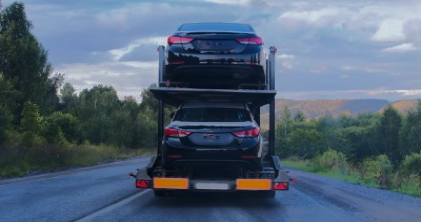Shipping a car can feel like an overwhelming process, especially if you have never had to use this kind of service before.
Shipping your car can be a great way to move your car to your new home a few states away, or you might want to have a car that you have purchased brought to you so that you do not have to drive it from the dealership to your home.
Shipping doesn’t have to be hard if you know more about the kinds of mistakes that often cause issues for those shipping cars. When you know what not to do when looking at shipping your car, you can easily have a good experience with the shipping process.
Having someone else bring your car to you can be a big help when you are moving or when you do not want to have to take the time to go get the new car that you have purchased.
If you are ready to learn more about the common mistakes that people make when shipping their cars, you need to read on!
Common Mistakes To Avoid When Shipping Your Car
1. Prepare Your Car
When the shipping company shows up to load your car onto the trailer, it needs to be ready to be picked up. It is a good idea to have cleaned your car and to have removed anything that is in the backseat or the trunk that could roll around and cause damage to the car or itself.
You will also want to be sure that you have all the documentation that you need to prepare on your end ready for the shipping company.
You might need to provide a valid photo ID for the pickup to be completed and the company will likely ask to see proof that you have the title to the car or the registration for the car.
Make sure that you are ready to allow them to inspect the car as well since they need to note the condition of the vehicle on the bill of lading that will be given to you when the car is delivered.
2. Do Your Research
Many people just pick the lowest quote that is offered to them by a shipping company or they pick the first shipping company that comes up in a search. This can work out all right in the end but you will serve yourself better by taking the time to look at your options more closely.
It is possible to get involved in shipping scams when you go for the cheapest quote and you should also make sure that you are aware of the various shipping options and processes that the company might be offering.
Looking into online reviews and asking for quotes from a few different companies are good ways to be sure that you are working with the right shipping company for your needs.
You should also make sure to ask to see insurance documentation and proof of registry with your state for interstate travel from any company that you are thinking of working with. Taking this step will protect you from scams and help you be sure that the company you are working with is the right one for the job.
3. Not Getting the Bill of Lading
When your car is dropped off at your new address or a shipping terminal location, you will need to ask for the bill of lading to be given to you. You should be required to sign this document stating that the car was delivered in good condition and that it arrived when it was expected.
The bill of lading is your proof that the car was delivered and you can choose not to sign it if you believe that the car was damaged during the trip or if it was not delivered as expected.
When you sign the bill of lading, you are approving the delivery and you will not be able to go back and argue that you were not given the service that you paid for.
Having the bill of lading in your hand, signed or not, is key to being able to take action if you have experienced issues with the shipping job that was done on your behalf.
4. Leaving Personal Items in Your Car
When you leave things that could be stolen or damaged in your car during the shipping process, the company is not liable or responsible for their loss, damage, or theft.
You will want to be sure that you remove anything that could go missing or be damaged from your car before it is put on the car trailer. This can be cameras, dash décor, and more.
Make sure that you sweep your car at least once for things that you do not want to be visible in the car during the trip or loose and rolling around.
This is a key area where many people make mistakes and there will not be any recourse open to you for the replacement of these items under the shipping contract you have signed.
Shipping a Car Can be Easy!
If you have been worried that you will not be able to find the right shipping company for your needs or that you will have a bad experience with the company that you hire, you just need to use these tips and tricks to prevent issues.
You will find that doing your research and making sure that your car is ready for pickup can make a big difference in the kind of experience that you have with a shipping company.
While it can be nerve-wracking to hand your car over to someone that you do not know to be driven across the country, you will be so glad that you did not put that many miles on your vehicle just to relocate it and that you did not have to drive for that many hours yourself.
There are many reasons that car shipping is a great option and you should not be intimidated by the newness of the experience when it is a good choice for your needs.
Read Also:
























